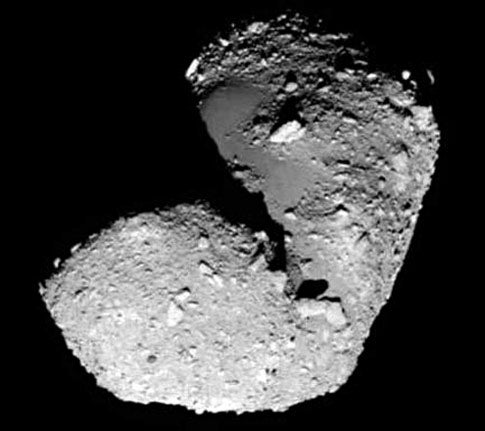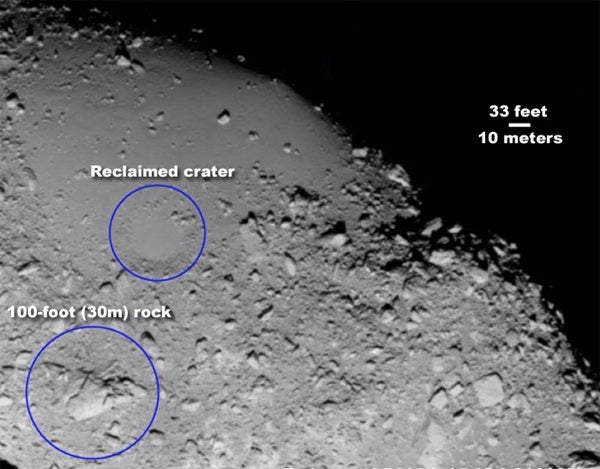Last month, the Japanese Aerospace Exploration Agency (JAXA) opted to delay the craft’s departure from the asteroid until spring 2007, which puts off return of possible samples until June 2010. A bright spot: Hayabusa has enough propellant to keep its ion engines running for the trip’s duration.
Before Hayabusa’s cameras returned their first clear images of Itokawa in September 2005, scientists assumed small near-Earth asteroids would have surfaces showing little geological variety. Images of Itokawa’s boulders, towering rock splinters, and smooth regions quickly overturned that notion.
Itokawa was scientists’ first glimpse of a “naked asteroid.” Other near-Earth objects visited to date have been coated with a thick layer of fine soil pulverized by eons of micrometeorite impacts. So, on two counts, Itokawa’s surface is like nothing planetary scientists have seen before.
Still, the mission has given planetary scientists a wealth of information and pioneered technologies that will be used in space missions to come, such as its ion drive and its ability to autonomously rendezvous and land. Over the next year, even as controllers scrutinize their data to work out a plan for stabilizing the craft, planetary scientists will study the data Hayabusa returned and work to understand what makes Itokawa tick.
Either way, for Hayabusa, the best is yet to come.











